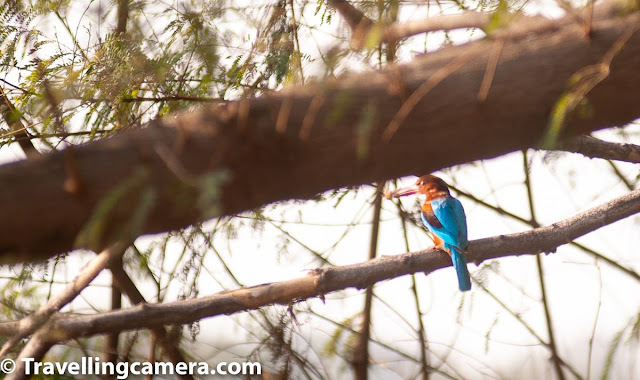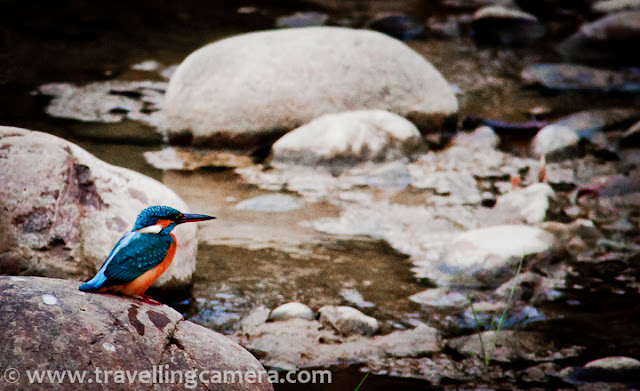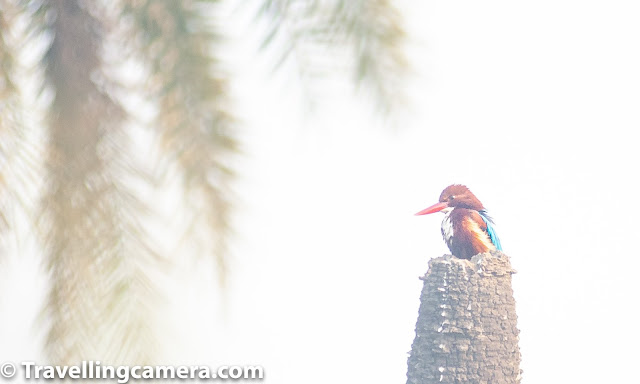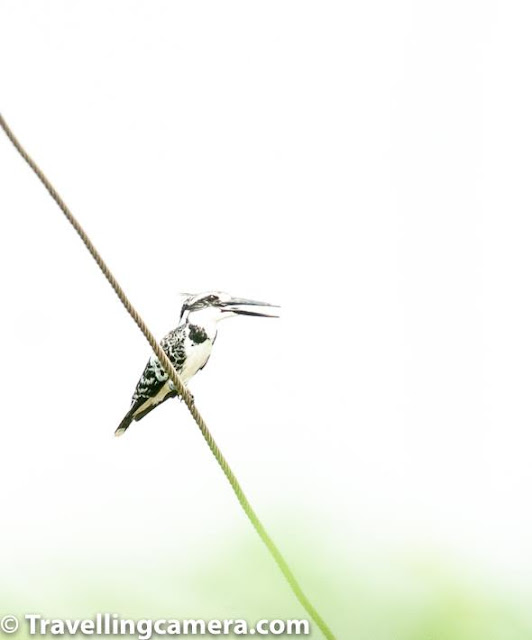Though snow has come to the mountains early this year, it is usually in the month of December that the mountains receive their first snow. Delhi sees fogs and cold waves. People retreat into their homes coming out only for Christmas and New Year. Life comes a full circle every year and it is time to stay patient. If winter is not your season, then you need to be like a Kingfisher. Calm, centered, and focused, a Kingfisher waits for hours to make a successful plunge. And that too without losing its cool or spoiling its mood.
Kingfisher is also one of Vijay's favorite birds and he is as excited about seeing it every time, even though the bird is seen quite often in Delhi NCR. It is one of the most common birds, along with Drongos and Egrets, to be seen perched on the electricity cables on the sides of the highway. It is a blessing to be able to find happiness in a common sight like this.
So far we have managed to click 3 different species of kingfishers - the Common Kingfisher, White-throated Kingfisher, and Pied Kingfisher. One would expect that the Common Kingfisher would be the most frequently spotted Kingfisher. However, this is not the case. The species we have seen most often is the White-throated Kingfisher.
But let's start with the Common Kingfisher, which is a river kingfisher. It is a small kingfisher and can easily be confused with another small kingfisher - the blue-eared kingfisher. The easiest way to differentiate between the two is that the Common Kingfisher has a rufus patch on the cheek, which the Blue-eared Kingfisher lacks. And in that aspect too, a Juvenile Blue-eared Kingfisher can again confuse you, because it too has a rufus patch on the cheek.
The presence of this kingfisher around a water body indicates that the water quality is good. This is mostly because of two reasons - the bird dives for fish under the surface of water and if the water is murky, the kingfisher does not prefer to stick around. Also good, clean water normally has an abundance of fish and other prey, whereas polluted water would not provide a good habitat for the bird.
The second kingfisher that we have clicked, very often actually, is the White-throated Kingfisher, which is a tree kingfisher. This is a large kingfisher and if you have seen a colorful kingfisher calmly perched on the electricity cables and poles on roadsides it is most probably this species. The species likes living close to human population and can be found away from waterbodies as well.
In the world of birds, these kingfishers are among the top in the food pyramid. They have almost no natural predators owing to their rapid flight and a strong beak. No wonder they are found casually perched in open.
The third kingfisher we have photographed is the Pied Kingfisher. This is a water kingfisher, unlike White-throated Kingfisher, which is a tree kingfisher. The Pied Kingfisher is peculiar in that it hovers over a water body before plunging for a kill. The kingfisher can also swallow prey when in flight. This ability allows it to hunt across large waterbodies that lack perches.
With this, we come to an end to the Bird of the Month series for this year. Hope you have enjoyed it.











.jpg)
Comments